Campervan Electrics Made Easy With The PPT Vehicle Power Hub
Campervan electrics have finally been revolutionised thanks to the Vehicle Power Hub from Portable Power Technology, a new all-in-one electrical solution for any adventure.
If you’ve checked out our eBook on how to build a campervan, then you’ll know just how complicated an electrical set up can be. I dedicated something like 100 pages of that book just to the electrical set up alone, which proves how intricate and fiddly it is.
There are fuseboxes to consider, isolator switches to place in your circuit, and lots of fiddly crimping of wires. And don’t forget the hassle of earthing your wires to the side of the van!
The Vehicle Power Hub takes all of the stress out of setting up your campervan electrics and is suitable for both short-term and full-time vanlifers.
Honestly; it’s one of the best things I’ve ever used, and I’ve reviewed A LOT of electrical items while writing for Van Clan.
Say goodbye to crimping and bolting, and say hello to plug-in-and-go electrics with a lithium-iron-phosphate battery that could send a ship into orbit!
Meet The Vehicle Power Hub From Portable Power Technology!

Overview
Here it is folks, the product that will revolutionise your outlook on campervan electrics forever!
Everything you need to power your campervan is right here in this small black box. It’s the same size as a normal Lithium battery and benefits from being just as light too!
The Vehicle Power Hub can replace any campervan electrics system or be your stand alone power hub from the off.
It comes in three power ratings; 1000, 1500, and 2300.
Plus a 3000 is coming onto the market very soon!
**Van Clan readers can use the code VPH-VanClan to receive 5% off any** Portable Power Technology Vehicle Power Hub!
With dimensions of 455 x 240 x 330mm and weighing in at just 17.5Kg, it’s a great solution for day campers who might use their vehicle for work through the week.
It’s also perfect for someone who is planning on living in a van full time and doesn’t want the hassle of messing around drawing wiring diagrams etc but wants to maximise every inch of their available storage space.
This all in one system can provide 10x the cycle life of normal AGM or Lead Acid batteries and fast charging capabilities when hooked up to solar or mains electrics.
It’s one serious bit of kit.
A Quick Word On The Pricing
Campervan electrics are the most expensive part of your build.
That’s a fact, so it means that you have to get it right first time or risk wasting a lot of money.
Most LiFePO₄ batteries cost around £1,000 on their own. Then there’s the solar charge regulator, the cables, the 12V USB unit, wires, battery monitor, more wires, fuseboxes and fuses, even more wires…
You get the idea.
The Vehicle Power Hub has all of the above built-in, making it not only the perfect product for day campers, military personal in the field, and long-term vanlifers, but a reasonably priced one too.
How Does It Work?
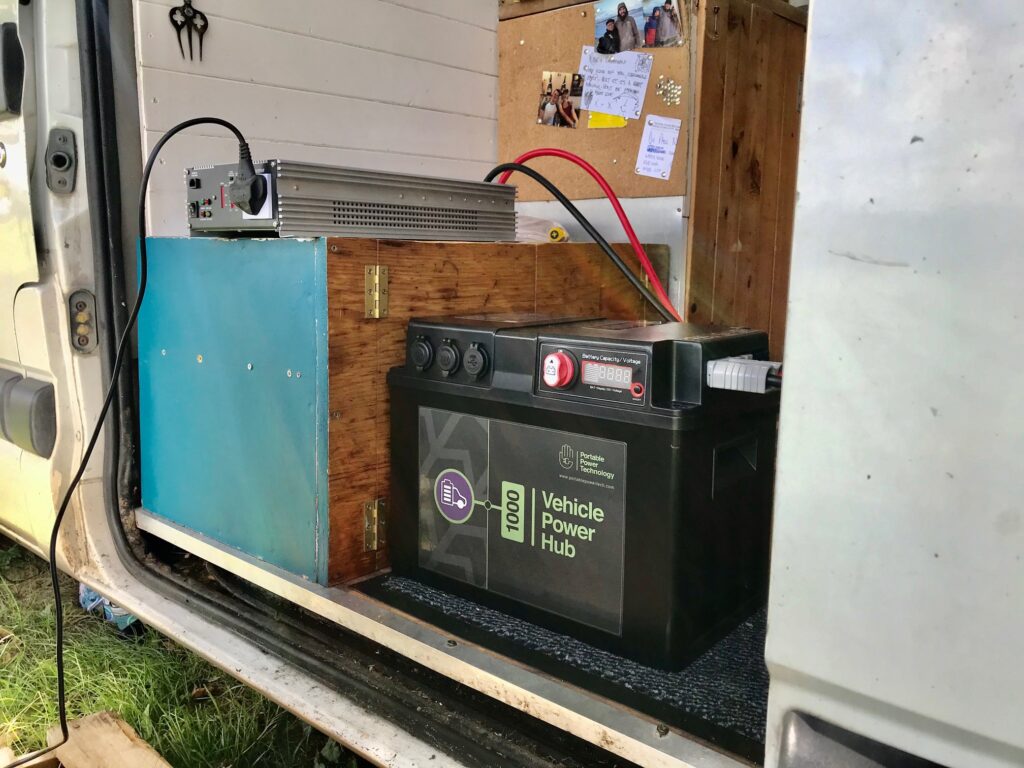
Inside the black outer casing is a powerful 80Ah/1000Wh LiFePO₄ battery.
The general rule of thumb is that a lithium-iron-phosphate battery is twice as powerful as its Lead Acid counterpart, and they charge up a heck of a lot quicker.
LiFePO₄ or Lithium-Iron Phosphate is the term given to the positive cathode inside the battery, and the electrolyte is an organic solvent.
When the battery is charging, lithium ions pass through the electrolyte and attach themselves to the negative electrode. The opposite action happens when charge is being used up by your electrical devices.
The Vehicle Power Hub is a deep discharge battery, meaning you can deplete it and charge it back up again safely without doing any damage to the battery.
Long story short; this thing is made to be used and built to last!
In the right conditions (ideal temperatures) LiFePO₄ batteries can be stored without losing any of their power.
Now you can have campervan electrics all year round no matter what the weather is doing outside.
And you can forget about this thing acting up like Lead Acid batteries do when it gets cold.
This system works perfectly in temperatures of -10℃ to +50 ℃.
Mine has been working like a dream so far through the colder UK nights without a glitch, though admittedly it’s nowhere near as cold as -10℃.
How Does The Product Feel?
Most campervan electrics systems span across a wide area. They have to be mounted on boards or screwed down, and you couldn’t move the whole thing around in one go with just two hands.
The Vehicle Power Hub has two easy-hold handles fixed into the strong metal and ABS case for moving in and out of your camper. It’s not light, but it’s definitely suitable for one person to lift on their own.
The Vehicle Power Hub provides an emergency lifeline for vans and campers everywhere!
Van Clan
It’s a durable product too. I wouldn’t have any problems taking this on an adventure (in fact I already have!), and it can certainly withstand a few knocks from shoes and your girlfriend sitting on it while eating a sandwich.
The Anderson plug-in ports are firm and secure too, but we’ll come onto those in a little while.
The switch to turn your campervan electrics on and off also has a reassuring click that lets you know that it’s securely in place.
This thing is so powerful that it can even kickstart your van engine too and reverse charge your starter battery!
How Many Charging Ports Does It Have?
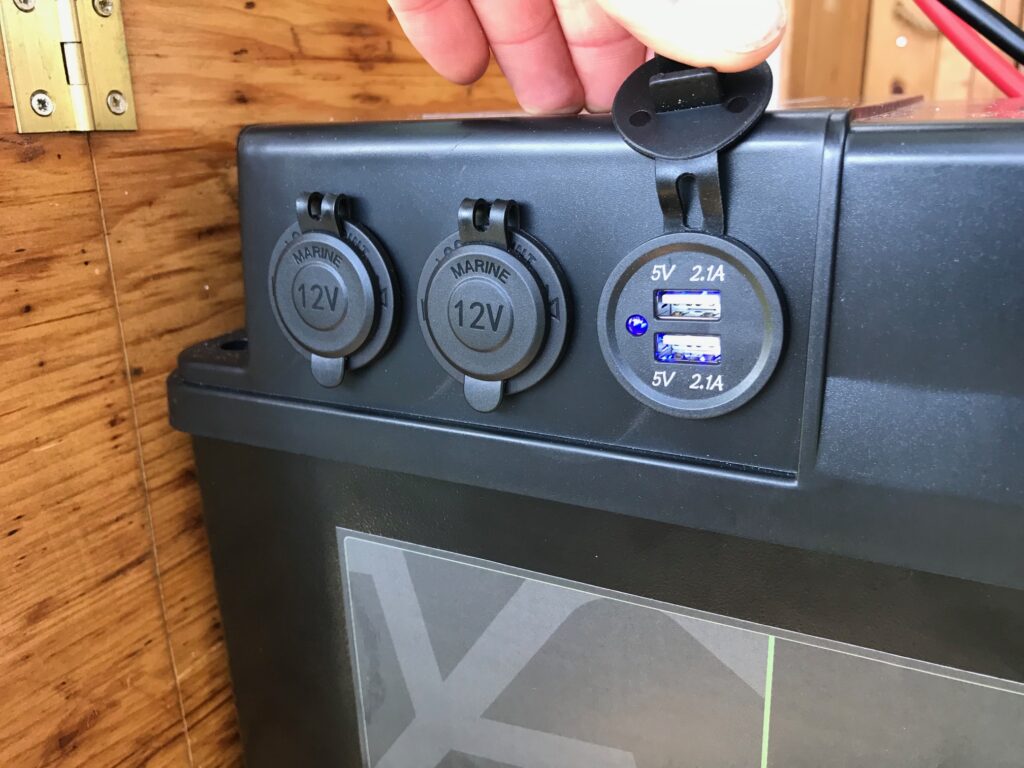
What are the main things that most people want when they start planning their campervan electrics?
Somewhere to charge their phone, somewhere to plug in a cooler, and a place to power or charge up LED light strips.
Those are the main things that we get asked about here at Van Clan at any rate!
The Vehicle Power Hub comes with two 12V marine sockets and a 12V dual-USB charging port for powering up everything from your drone batteries and action cameras to kindles and fans.
There’s no wiring or switches to put in place; just plug in and power on!
Using An Inverter
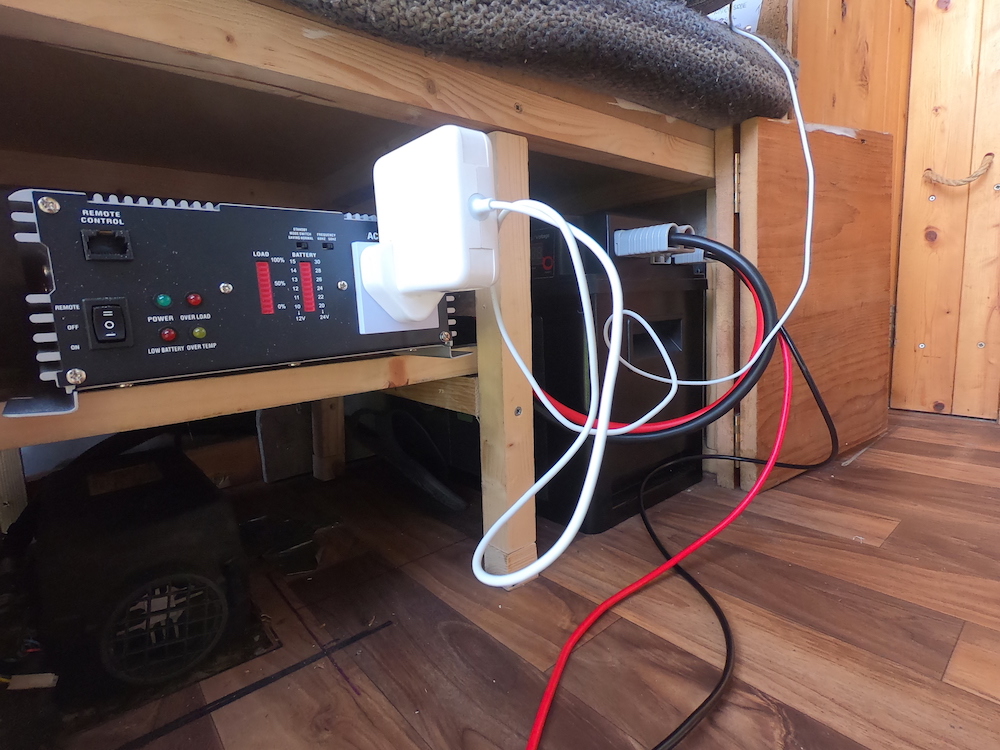
Of course, if you’re building a campervan electrics system for long-term travel or for creating a mobile workspace like this Nissan Camper workshop on wheels, then you’re going to need to run an inverter.
The Vehicle Power Hub can cope with inverters up to 1800W. That’s enough power to run most power tools, handheld and bench, as well as all manner of office equipment such as screens and projectors.
This is where this product really starts to take the stress out of setting up your campervan electrics.
All of the cables that you need to hook up solar panels, inverters, and a mains-wall charger are included in the pack. They’re connected up to Anderson connectors which can be plugged in and pulled out with ease.
Talk about a simple and effective system!
Instead of connecting an inverter up to an isolator switch and earthing it to the side of your van, all you need to do is hook up the inverter cables to the back of your inverter and plug the Anderson connector into the designated slot.


Can This Really Provide All The Campervan Electrics I Need?
Absolutely, especially if you’re planning on converting a small vehicle and don’t want to designate a whole chunk of the build into an electrical power station.
The battery is powerful enough to cope with anything that you can throw at it, and because it’s a LiFePO₄ unit it charges up super fast compared to cheaper leisure batteries.
It’s perfect for off grid living too as it can hold charge for way longer!
And with a whole host of 12V reading lamps and spotlights out there, it’s the perfect solution for any sized build, either as the main campervan electrics system or a secondary system in a larger skoolie conversion.
How Do I Charge The Vehicle Power Hub Up?
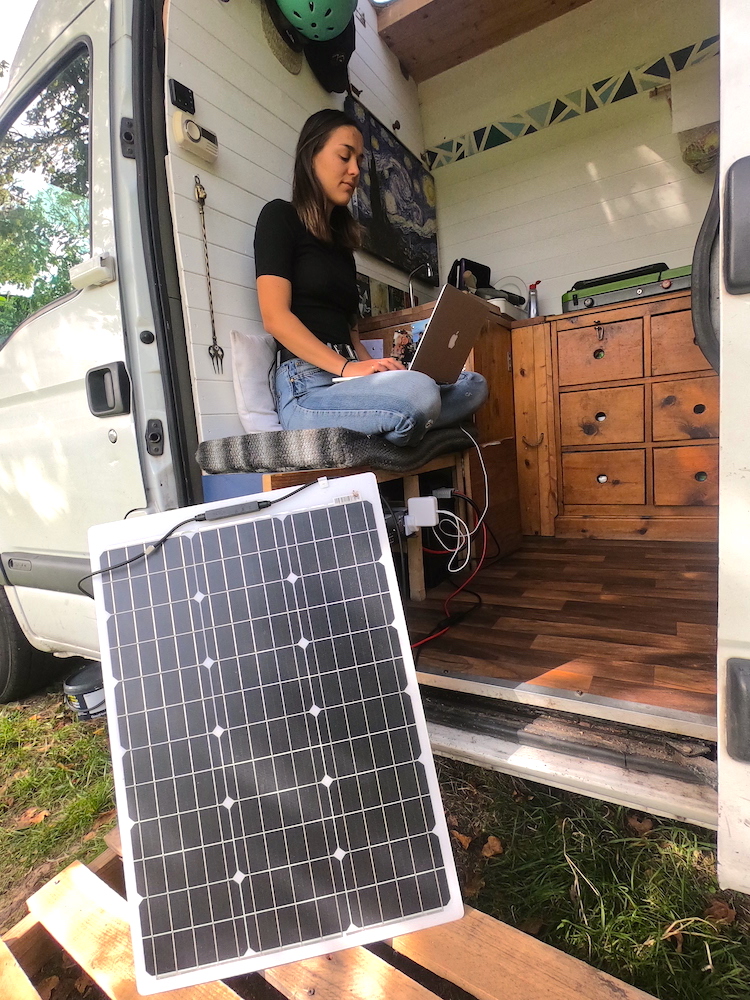
The Vehicle Power Hub can be charged up via the included wall-mains charger or a solar panel.
The mains charger fills this thing up pretty quickly to say how big a battery it is.
Leave it on overnight, and you’ll have a full battery in the morning ready for your next adventure!
We’ve been keeping ours topped up with the semi-flexible solar panel that we received with the Portable Powerpack 450, another epic PPT product that we used out in Sardinia while making spoons and other woodwork creations.
Hooking up a solar panel or the mains charger couldn’t be simpler too.
They each have their own designated Anderson connector ports; it’s simply a case of plugging them in and sitting back.
It’s so easy a child could do it (as long as he or she was 18 and had electrical safety training).
In Vehicle Charging
One exciting feature that you might not clock straight away is the fact that the Vehicle Power Hub 1000 is capable of receiving charge from your van battery while you drive.
Now, if you run out of electricity, you don’t have to run around panicking or making ‘S.O.S’ with stones on the nearest beach when you can’t bring up your maps or send a funny TikTok of a cat.
Setting up a split charge relay in a van usually requires fiddling around with a small box at the back of your electrical system and carrying wires both to and from the engine to your battery bank.
The ‘in-vehicle battery to battery charger’ is fully integrated into the Vehicle Power Hub, so there’s no messing around.
Just use the cable supplied, fix it into the Anderson connector above the solar port, and away you go!
This simple charging solution can fill your power hub from completely flat to full of juice in just 2.5 hours of driving.
Now you can have an extra excuse to get out and see some scenery!
And don’t worry; your van battery will still get charged from your alternator, so there’s no chance that you’ll drain it out and leave yourself without a working motor.
This makes the Power Hub even more of an essential item for ‘vehicles in the field’ that might need power at a moments notice, especially when it might be cloudy outside or in the middle of a forest with no solar.
And there don’t tend to be many plug sockets in the sides of trees!
I guess you could say that the Vehicle Power Hub provides an emergency lifeline for vans and campers everywhere.
It’s the gift that keeps on giving!
Can I Have Campervan Electrics Outside My Van?
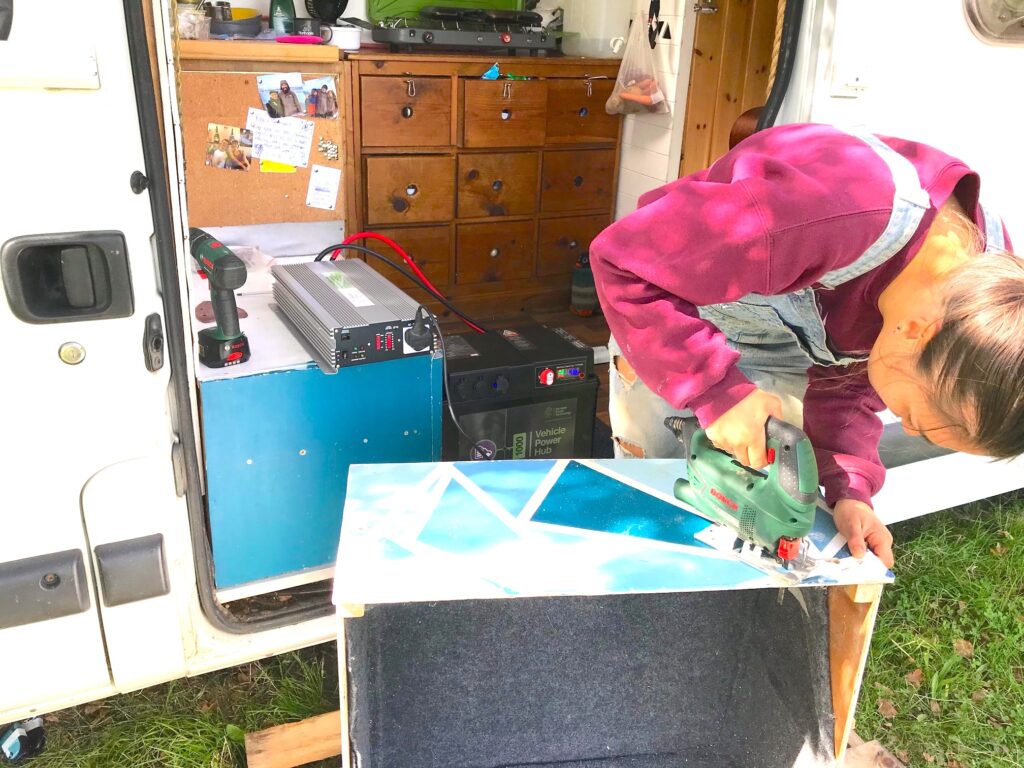
The Vehicle Power Hub does come with fixing plates so that you can fix it in place, but the beauty of the system is that you can lift it in and out of your camper if you need electrics for any activity.
We’ve created a set up in our van that allows us to remove both our battery and inverter if Rose is working on a larger project; that way we don’t need to worry about getting dust inside our living space!
The Vehicle Power Hub is ideal for anyone who needs to spend a lot of time working off grid, and also in emergency situations such as medical hospitals or during military operations.
Not that many vanlifers will find themselves in those situations, but at least it gives you an idea as to how reliable this bit of kit is.
What Safety Features Does It Have?
Like any campervan electrics system, safety is incredibly important.
When you’re placing electrical devices inside a metal box, the last thing you want to do is create a giant death trap where any surface could give you a shock!
There’s no chance of any such occurrence with the Vehicle Power Hub.
This all-in-one campervan electrics system boasts a battery isolator plus fuse and circuit breakers.
So if something happens and you have a short or a wire gets cut, you’re protected.
What’s more, the BMS (battery management system) has lots of other temperature and safety protective measures in place to keep you un-fried and your expensive gear from becoming damaged.
What Happens If An Anderson Connector Breaks?
PPT think of everything, which is why they have included some extra Anderson connector blanks and terminals for you hook up should one of your existing connectors break.
Just strip back some wire, clamp a metal terminal on, and fix it into the new connector.
Job done!
Our Verdict
The Vehicle Power Hub is an awesome system that provides everyone from camper-build novices right through to trained professionals with a simple and effective campervan electrics solution.
Everything has been designed to make the user experience as positive and pain-free as possible, from the simple display screen right down to the Anderson connector system.
We’re huge fans of this set-up and think that anyone who is looking to convert their first van should definitely give it a try.
It’s certainly won us over!
And don’t forget, Van Clan readers can use the code VPH-VanClan to receive 5% off any Portable Power Technology Vehicle Power Hub!
You can find out more about the Vehicle Power Hub 1000 and the other units in the range over on the Portable Power Technology website!
More Content From The
Van Clan Team!

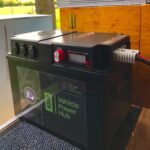
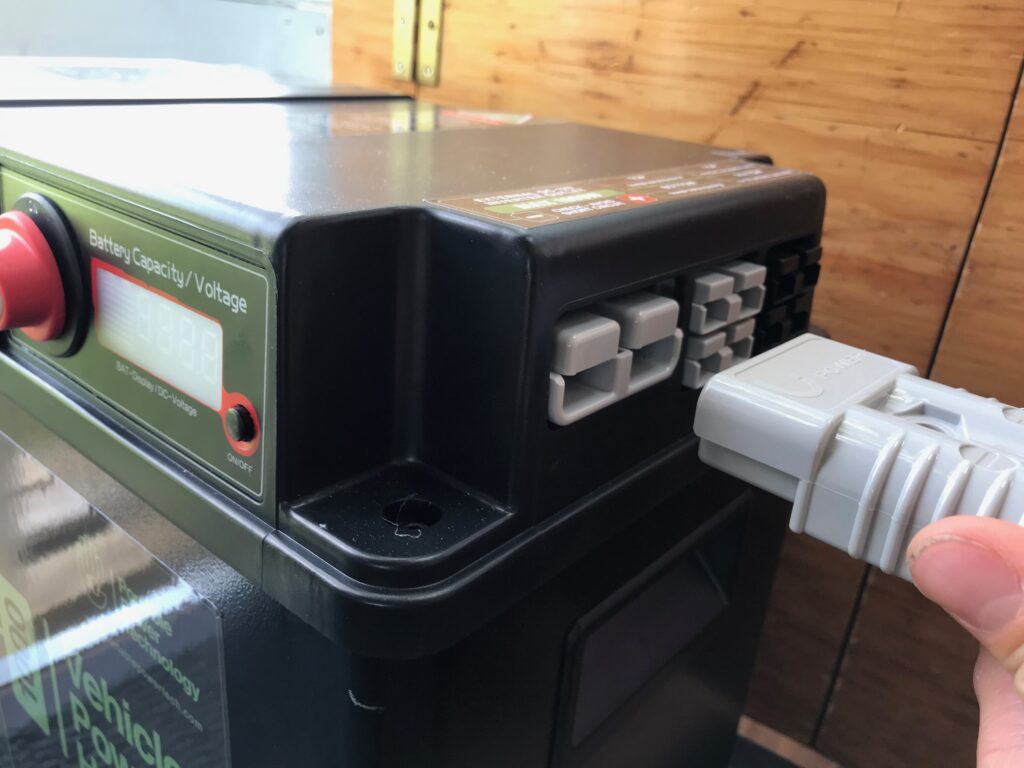
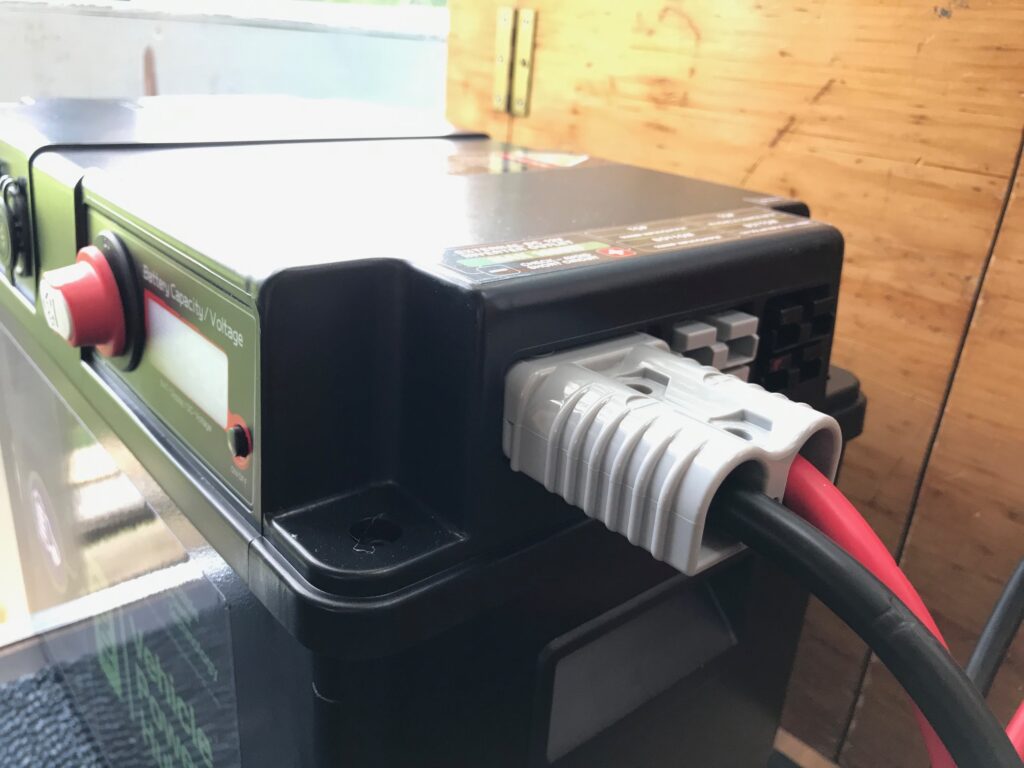
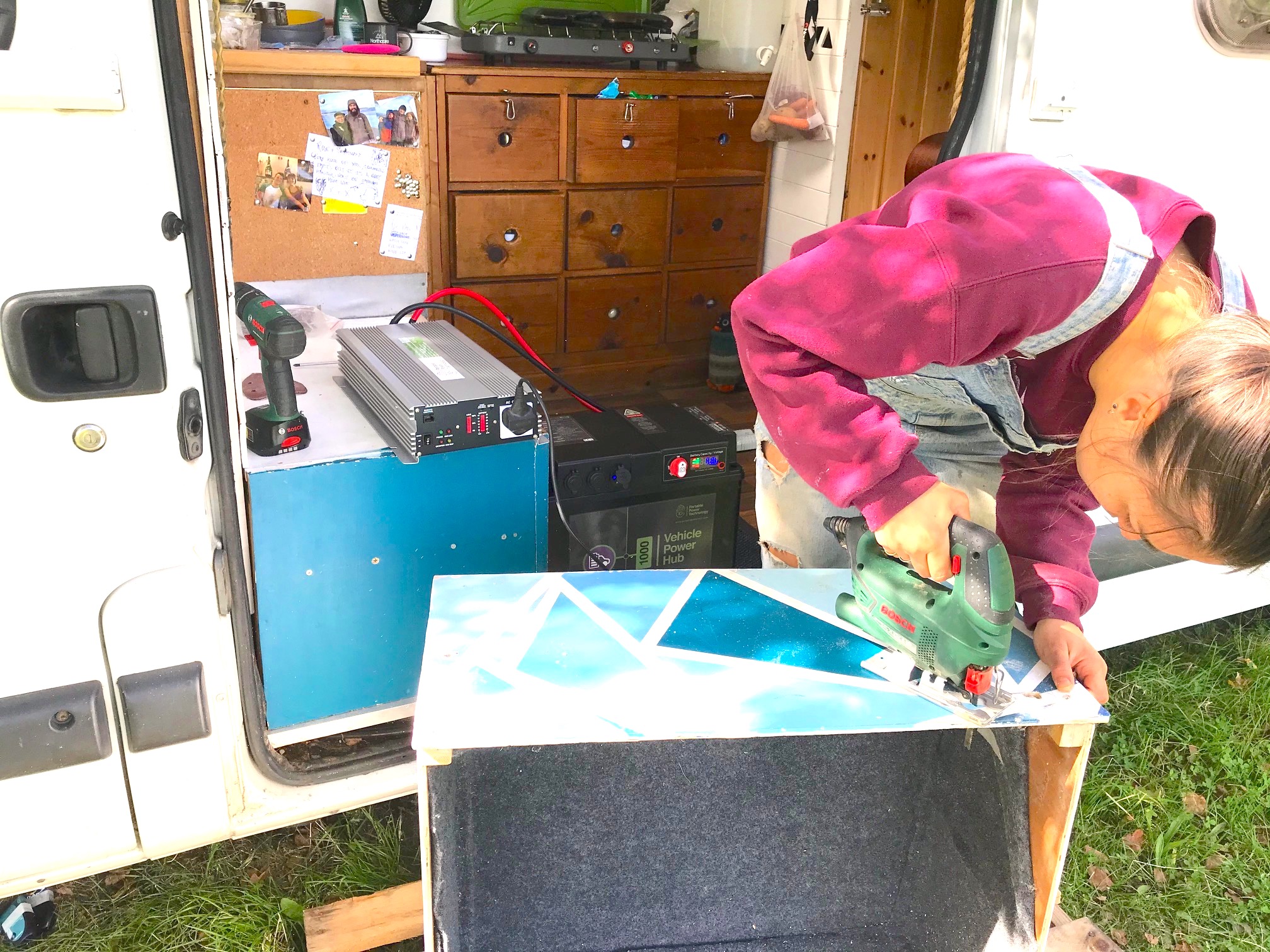

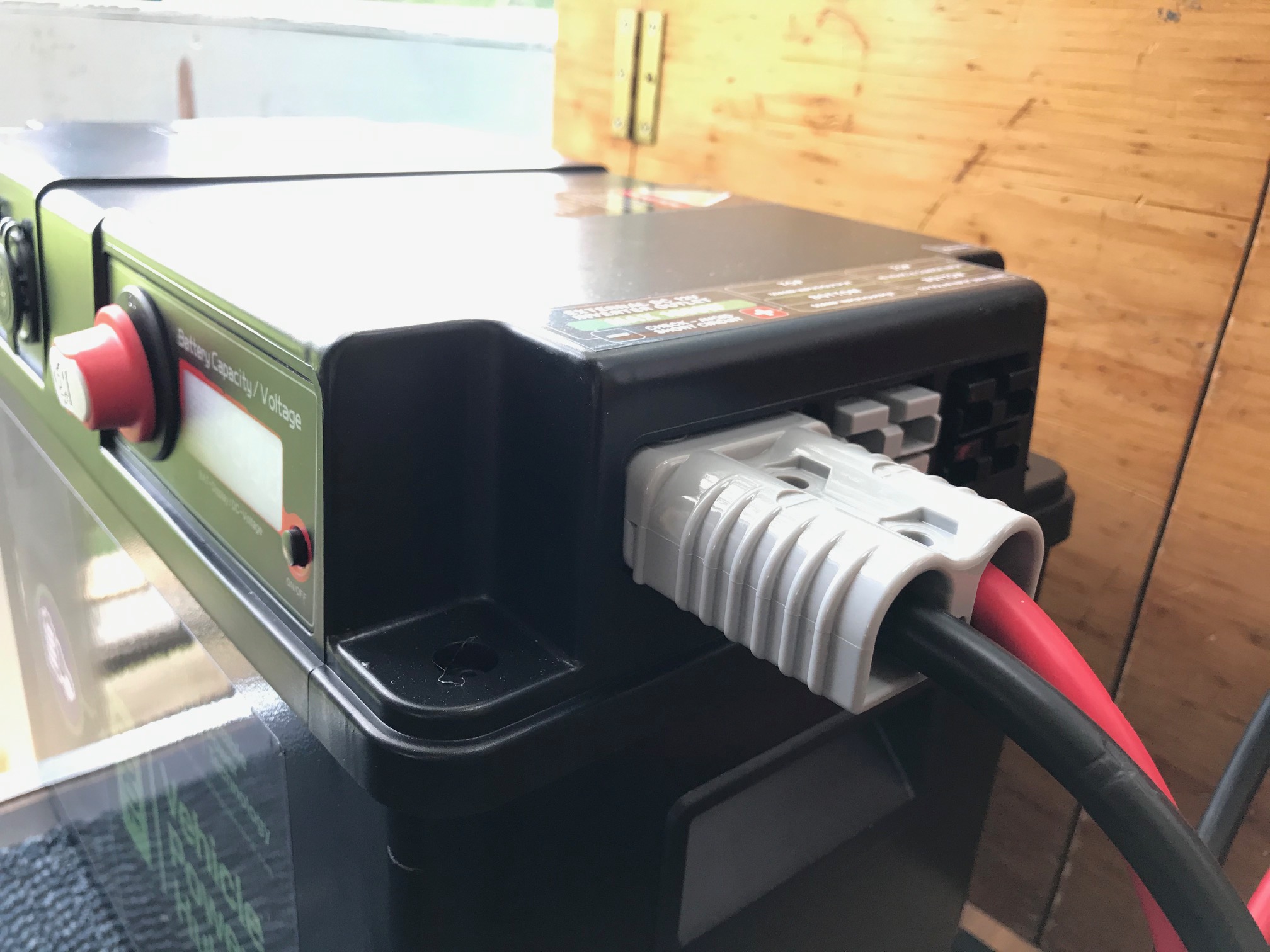
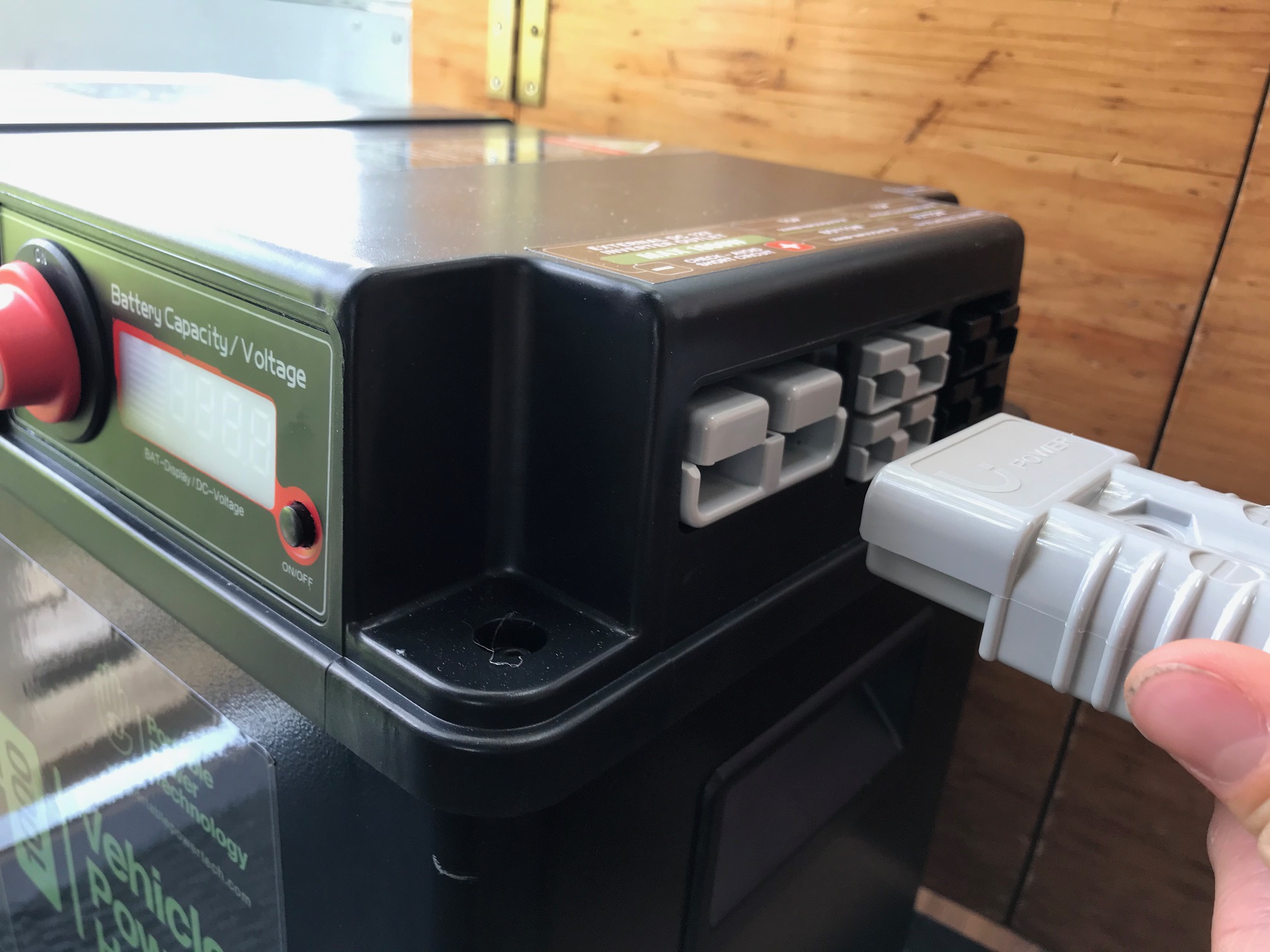
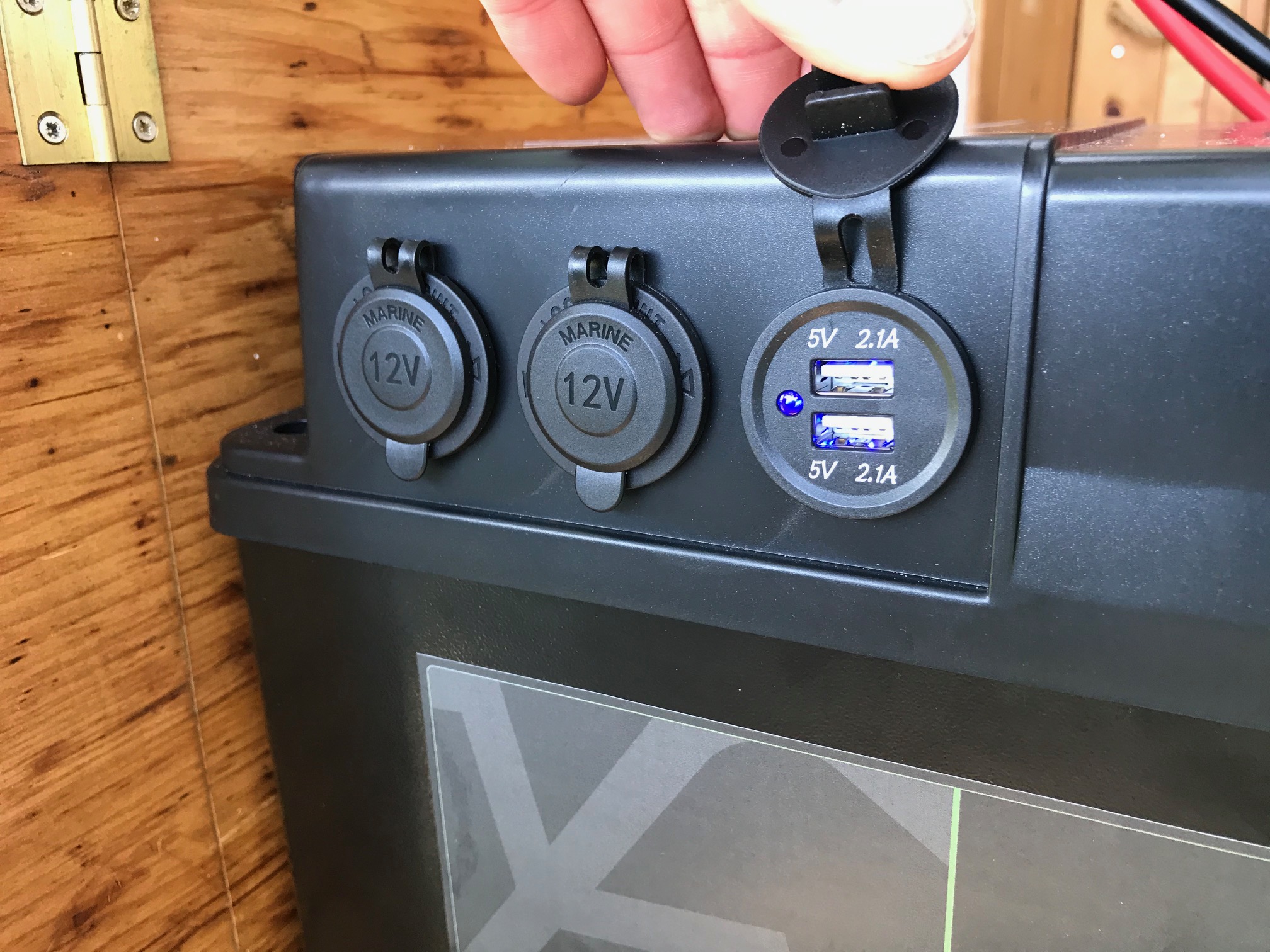

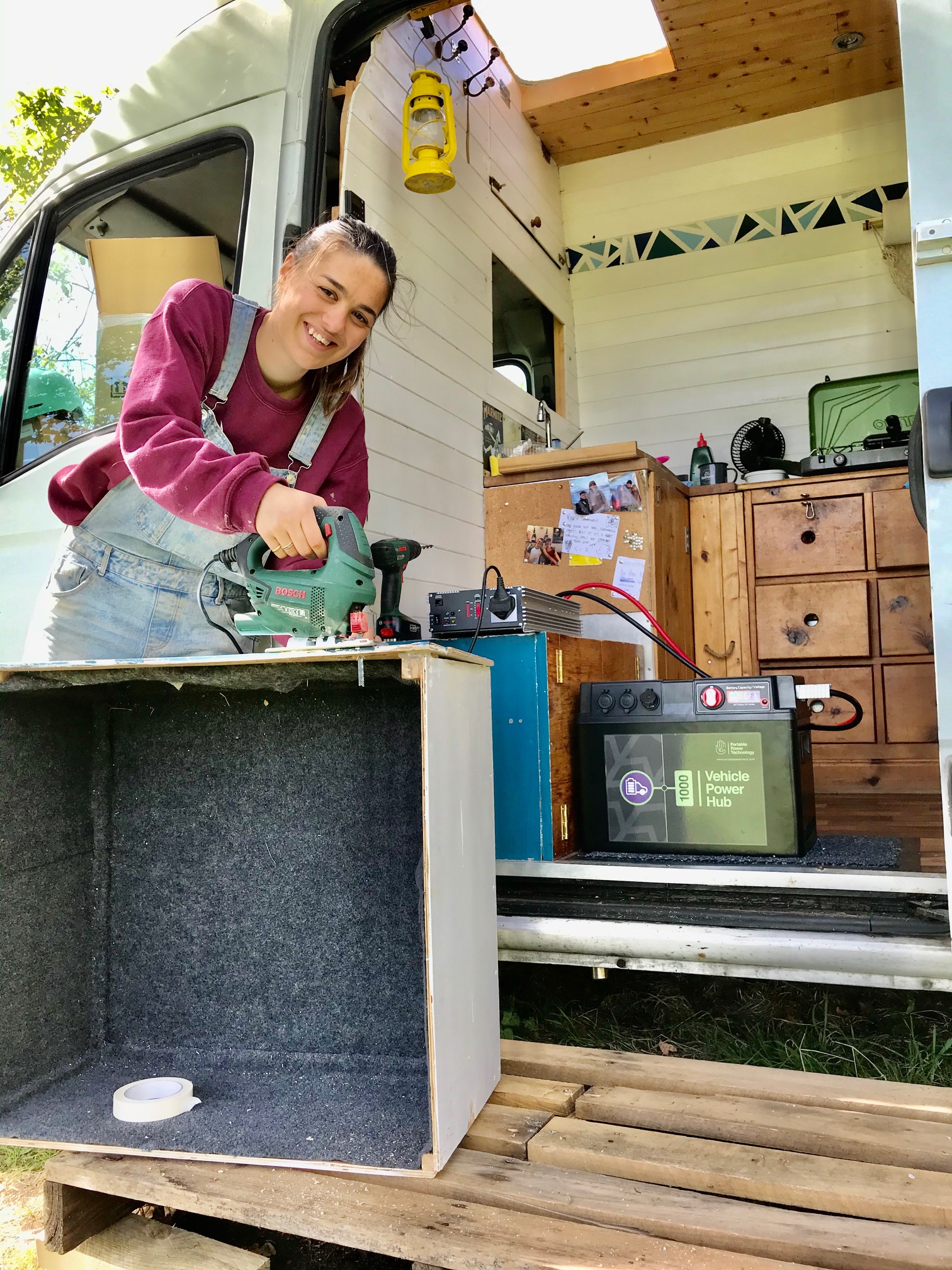
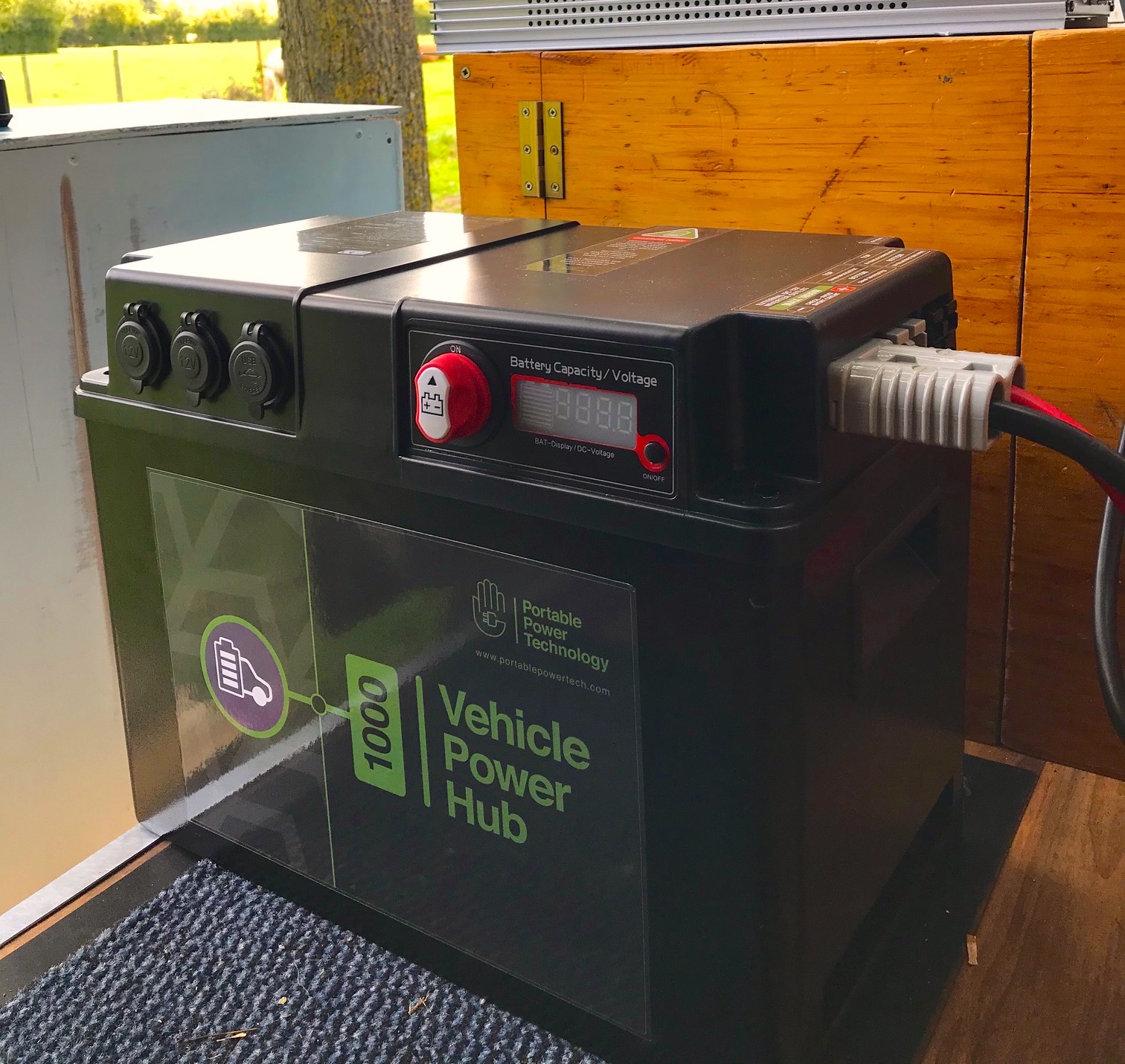


COMMENTS
Please note that all comments will be checked by our team before being approved.